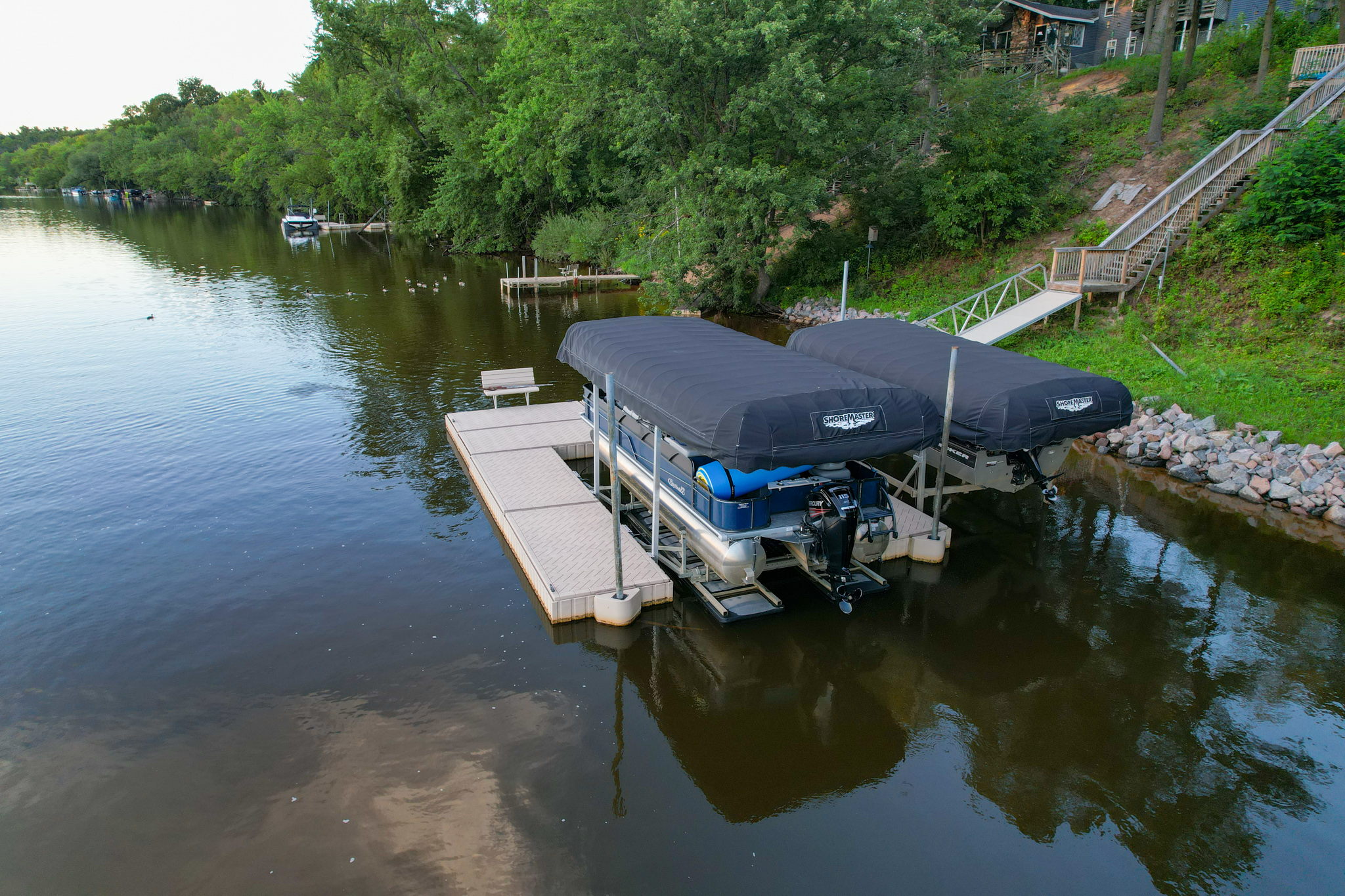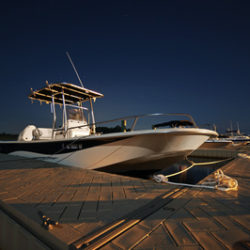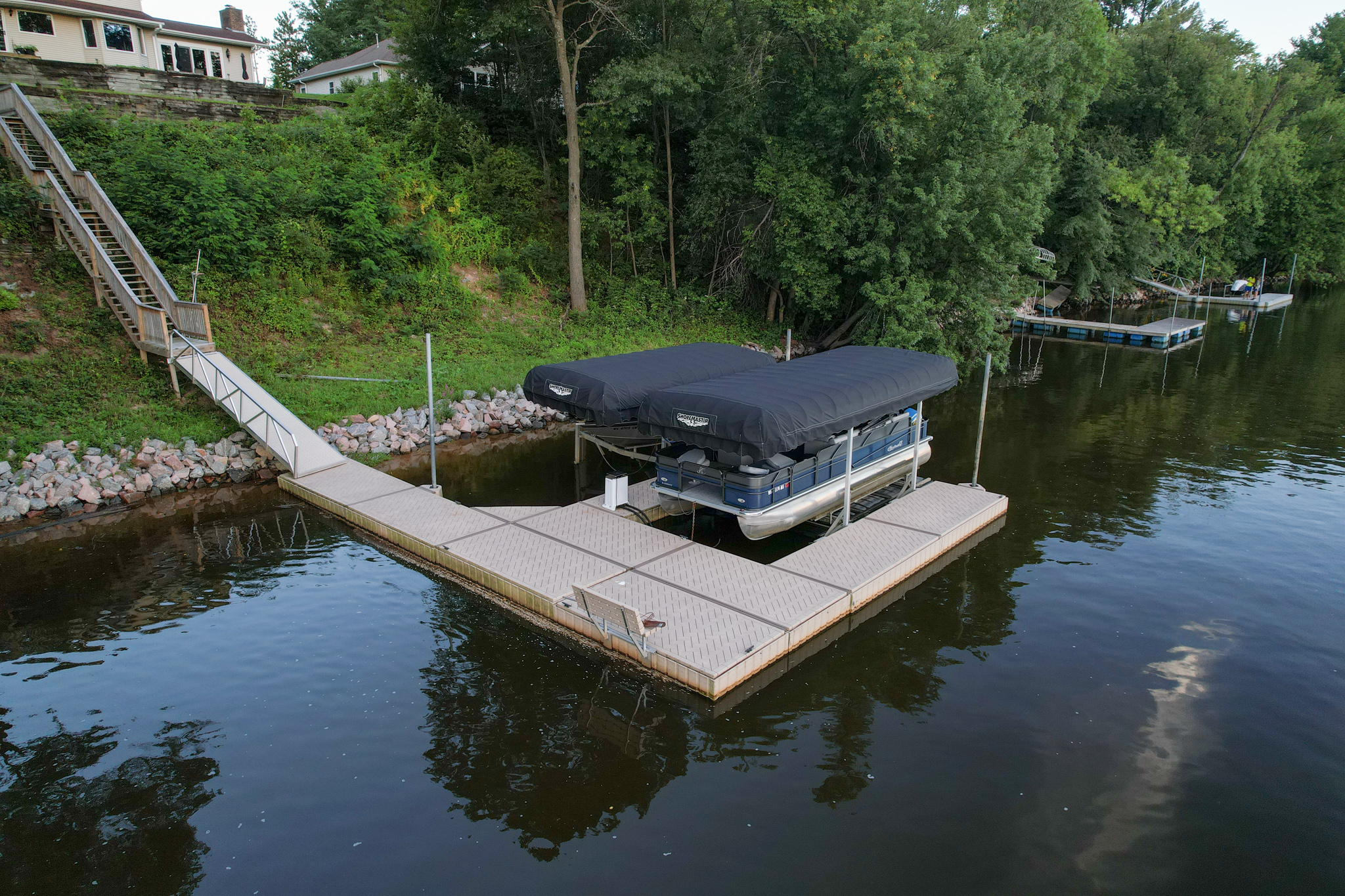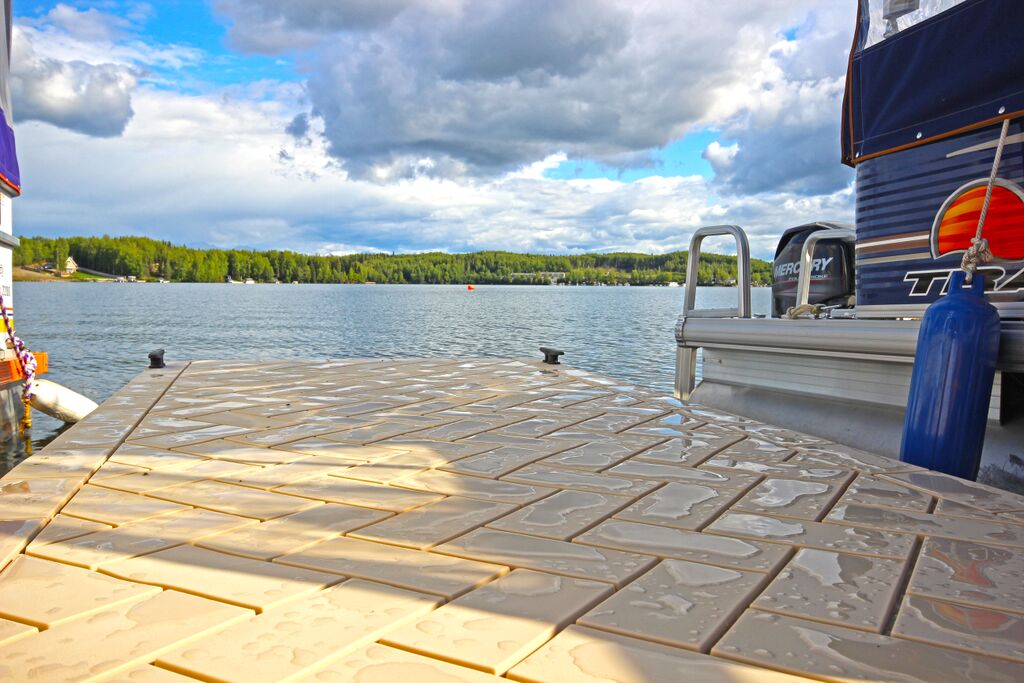Posted on February 23, 2023
Do You Need Lake Muck Removal? We Have Solutions!
Written by PolyDock Products Marketing
Muck is the disgusting buildup of biological materials that can build up in your lake over time. For your lake to be healthy and beautiful again, it needs to be aerated and the muck removed. Muck removal solutions range from something as simple and cheap as a muck rake to hiring a service to bring construction equipment in.
When you first shop around for waterfront property, you clearly visualize the perfect outdoor retreat. Clear, cool, refreshing water that you can boat, swim, and fish in; a beautiful view; the smell of the fresh air and wilderness … unless you have muck.
Lake muck is a foul-smelling buildup that ruins an otherwise enjoyable waterfront — you can’t exactly get a refreshing dip in a swim area filled with brown sludge that smells like rotten eggs. Dead animals and plants, sediment runoff, fertilizer buildup, septic waste, yard waste, excess algae, bird feces, and other factors like a lack of oxygen can all be part of muck.
Not only is lake muck bad for the water, but it’s also bad for your boat and dock. The runoff and pollution lead to excess biological growth that can stain or break down finishes, clog moving parts, and generally make your waterfront dirty and disgusting. Restoring your lake to its natural beauty and protecting your dock and boat requires muck removal. We have basic pros and cons of the most common muck removal methods — and one method to make muck a little easier to live with.

Muck Rake
Muck rakes not only allow you to rake away muck, but they also agitate the lake bottom. Stirring the bottom up will reintroduce oxygen and re-suspend sediment, both of which break down bacteria. It’s also easy to go out with the rake as often as you need to. However, if you have a big area or a poor-quality tool, it can be labor and time intensive.
Muck Pellets
Muck pellets can be tossed into your water to help break down muck. It’s a really easy concept, doesn’t require much effort, and in small areas, it can break down a couple of inches of muck. If you have to get through thick muck, you’ll need many more pellets, which can be expensive. You’ll also need to treat your lake repeatedly to maintain your results.
Fountains, Aerators, and Bubblers
These fixtures are great for decreasing muck in shallow areas like your shoreline. They can also cut down on algae and keep further muck from accumulating. However, they cannot agitate the lake bottom, and surface bubbles aren’t enough to reintroduce oxygen or remove bottom muck.
Manual Rollers or Muck Razers
Think along the lines of a heavy-duty muck rake capable of industrial-grade agitation, and you have a muck razer. This is a one-time investment for a simple and effective tool that creates visible, immediate change in your bottom. It does require assembly and physical labor, as well as caution around the sharp tines.
Muck Blowers or Hydro Jets
Like the fountains, aerators, and bubblers previously mentioned, muck blowers help mitigate muck creation through movement, in this case, by generating a current. It’s a one-time install with little labor that reduces muck accumulation and algae, although it’s still best when paired with a muck razer or other agitating device. It requires a power hook-up and potentially conflicts with laws and regulations, and depending on what you have in the water, its performance could be affected.
Automated Rolling Arms
These are very thorough, complete muck mitigation systems that require little effort after installation. However, a lot of effort is required before installation, namely, a highly regulated permitting process. There’s also a significant risk to swimmers and a hefty price tag, which only gets steeper because it needs to be maintained and seasonally removed.
Dredging
Scooping or pumping muck is effective at eliminating muck because it gets rid of what’s already there and changes the lake bottom so that weed infestations get cleared out. Obviously, this is bad for the environment, including fish habitats. It’s also outside of the budget of the average boater.
Bulldozing
Using a bulldozer will not only immediately eliminate the problem but let you rebuild your lake from the ground up. However, it’s even worse for the lake than dredging is — the lake or pond must be completely drained for the bulldozer to access it and then refilled once the muck is removed.
PolyDock Floating Dock Systems
Does thinking about muck removal make you just as queasy as the muck itself? You’re not alone. While muck removal is an important part of your water’s health and your safety, you don’t have to be stuck on shore while the muck is in the water. Floating boat docks are designed specifically to bypass hazards like muck. Muck-covered bottoms can be problematic for docks with legs or piles but not necessarily for floating docks, which are only held in place with a connection to the shore and anchors in the water. Because floating docks rest on top of the water rather than in it, your dock, boat lift, and other attached accessories will always be above the water, never submerged in muck. These automatic adjustments also mean never having to trudge into the water to change your dock height.
If your lake is prone to mucky conditions and you think a floating modular docking system is right for you, we’re happy to help you find the perfect PolyDock system. For more information on our floating dock systems or to pick our brains about solutions, get in touch with PolyDock today.




